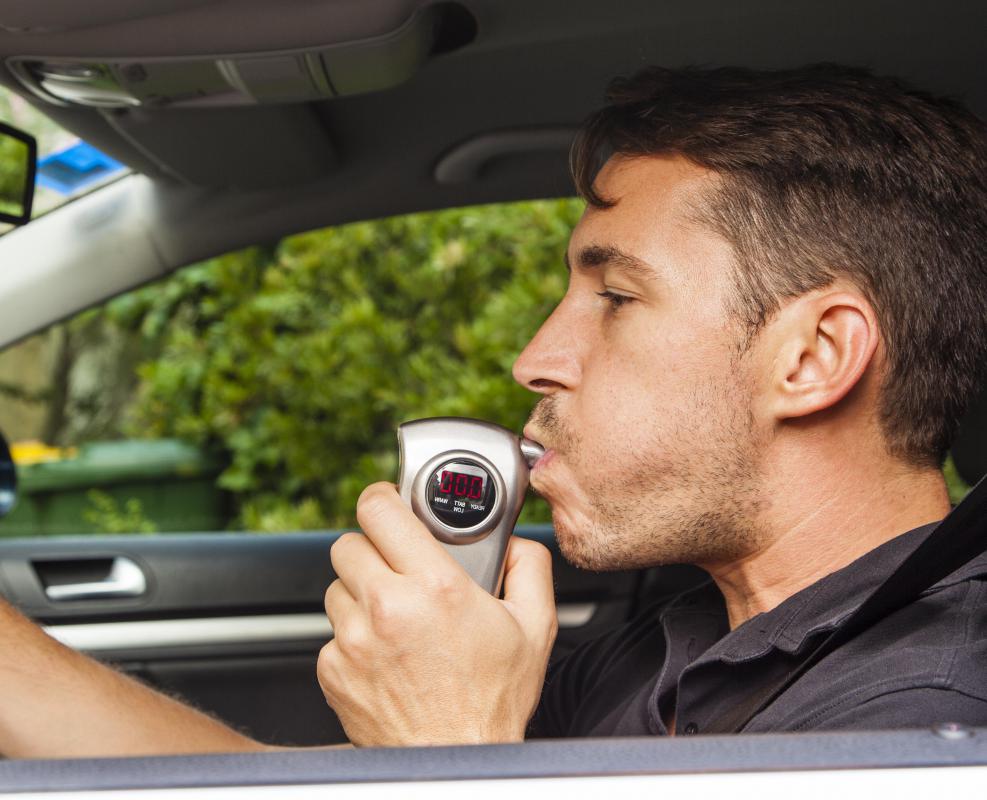At WiseGEEK, we're committed to delivering accurate, trustworthy information. Our expert-authored content is rigorously fact-checked and sourced from credible authorities. Discover how we uphold the highest standards in providing you with reliable knowledge.
What is an Ignition Interlock Device?
Driving while intoxicated or while under the influence of alcohol is a serious problem throughout the world. One device that has gained popularity with courts in the United States is the ignition interlock device (IID), also known as a breath alcohol ignition interlock device (BIID). The device tests the amount of alcohol present in the driver's breath. Once installed in an offender's vehicle, the offender must test before the car may be started and at random intervals thereafter.
An ignition interlock device operates much like a breathalyzer that is used to test a suspect's blood alcohol content. The device is mounted on the dashboard of an offender's vehicle and the offender must blow into it when he or she wishes to start the vehicle. The vehicle cannot be started without first blowing into the device. In order to prevent an intoxicated driver from having someone else blow into the device to pass the test and allow the vehicle to start, the device also requires the driver to periodically retest while driving.

Failure of the initial test on an ignition interlock device will prevent the vehicle from being started. The amount of alcohol allowable on the initial, or subsequent tests, is predetermined and programmed into the machine by court personnel. Due to the potential danger of shutting the car down en route, once the car has been started, a failed test does not immediately shut the car down. The device will usually warn the driver to shut the car down and will begin to set off alarms on the car, such as the horn honking or the lights flashing.
There are a number of different companies that manufacture ignition interlock devices and the technology continues to improve. Most devices are made with a ethanol-specific fuel cell sensor, meaning the device is specifically designed to detect the presence of alcohol in a breath sample. As with all technology, the devices are not 100% accurate and must be calibrated on a regular basis to remain as effective as possible. The device will store the results of all tests for a predetermined period of time for review by the court.
Courts across the United States commonly order the use of an ignition interlock device when a defendant has been convicted of driving under the influence of alcohol. Use of the device is frequently made a condition of an offender's probation. Not surprisingly, an offender who has been ordered to use the device must bear the burden of the costs, which can be significant.
AS FEATURED ON:
AS FEATURED ON:











Discuss this Article
Post your comments